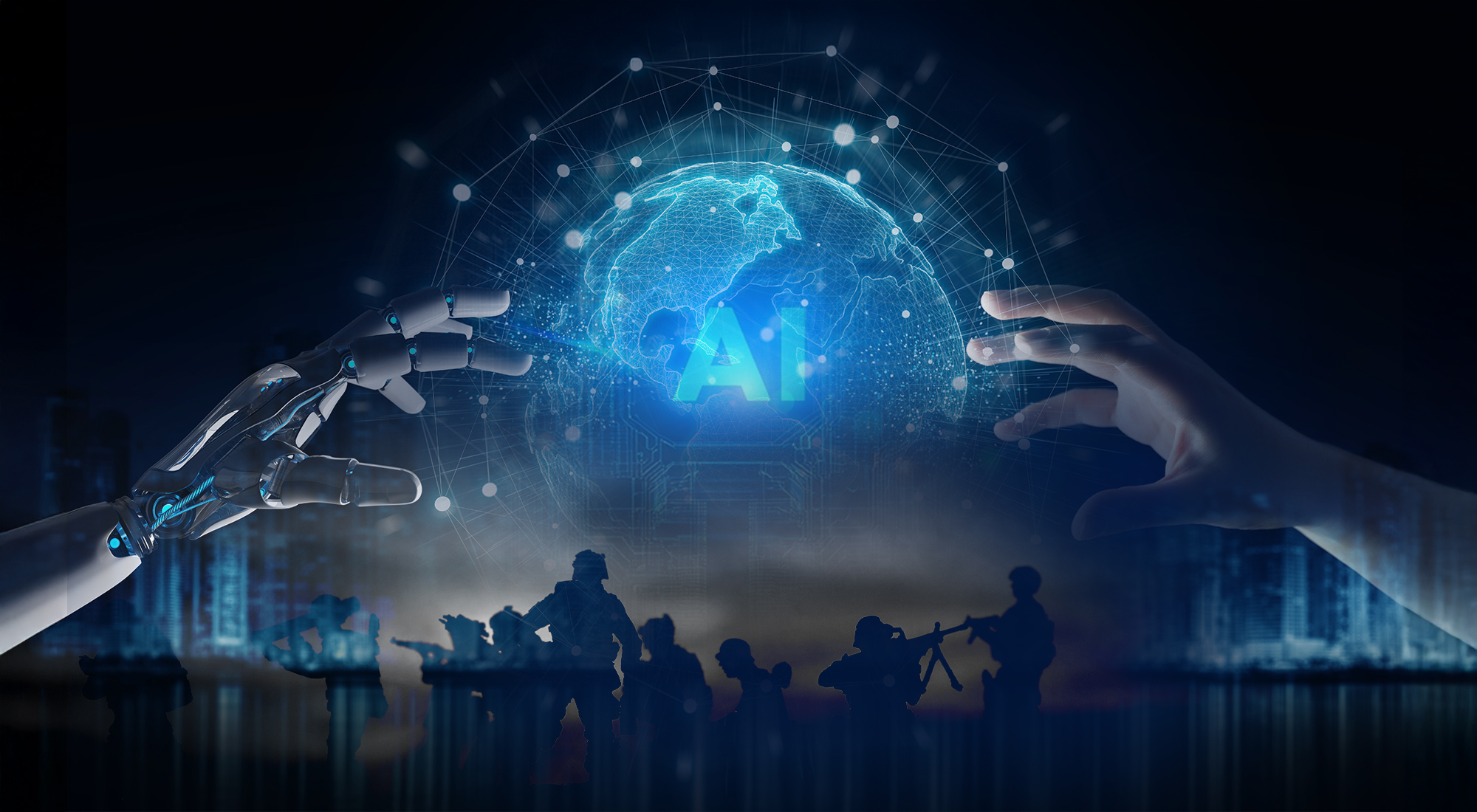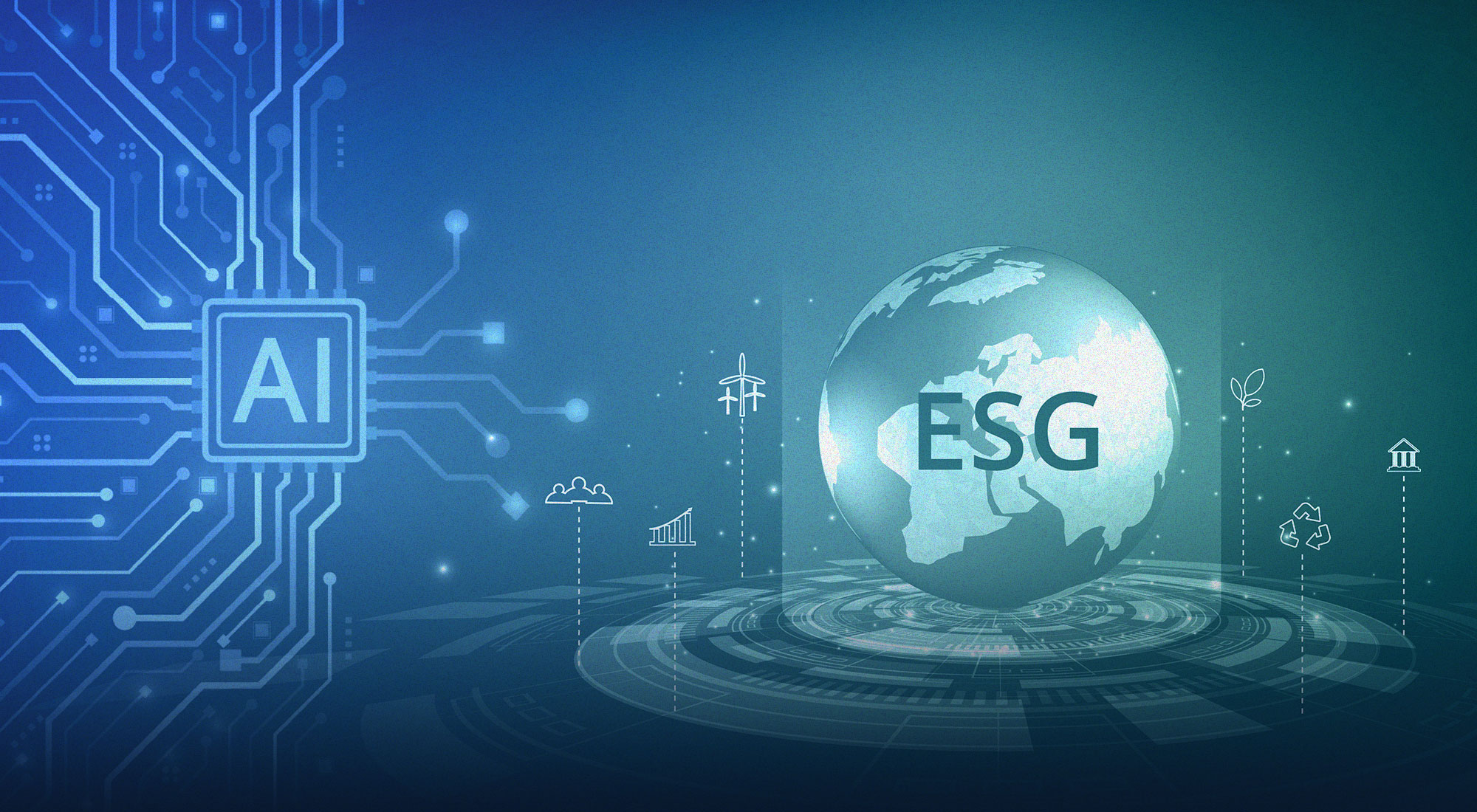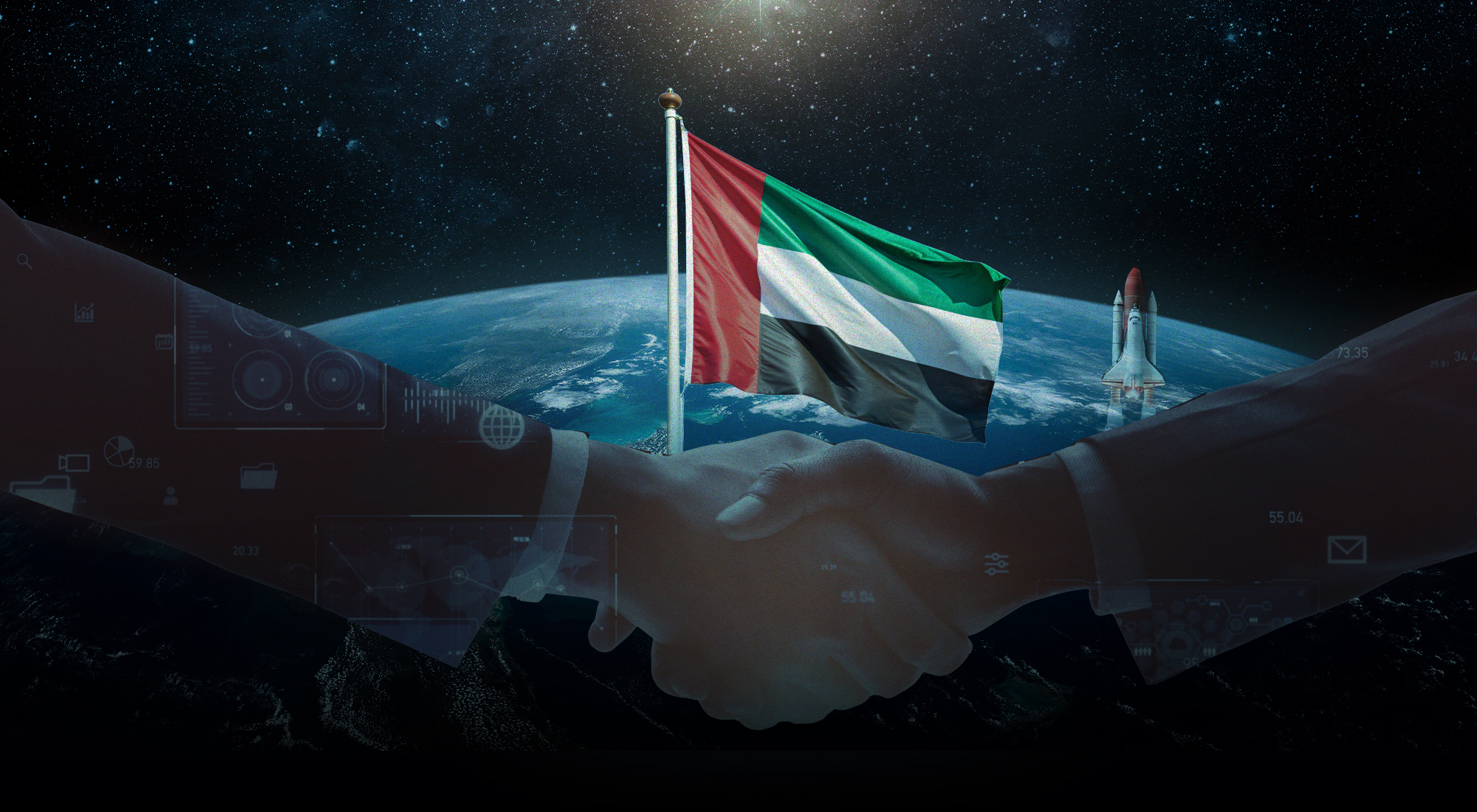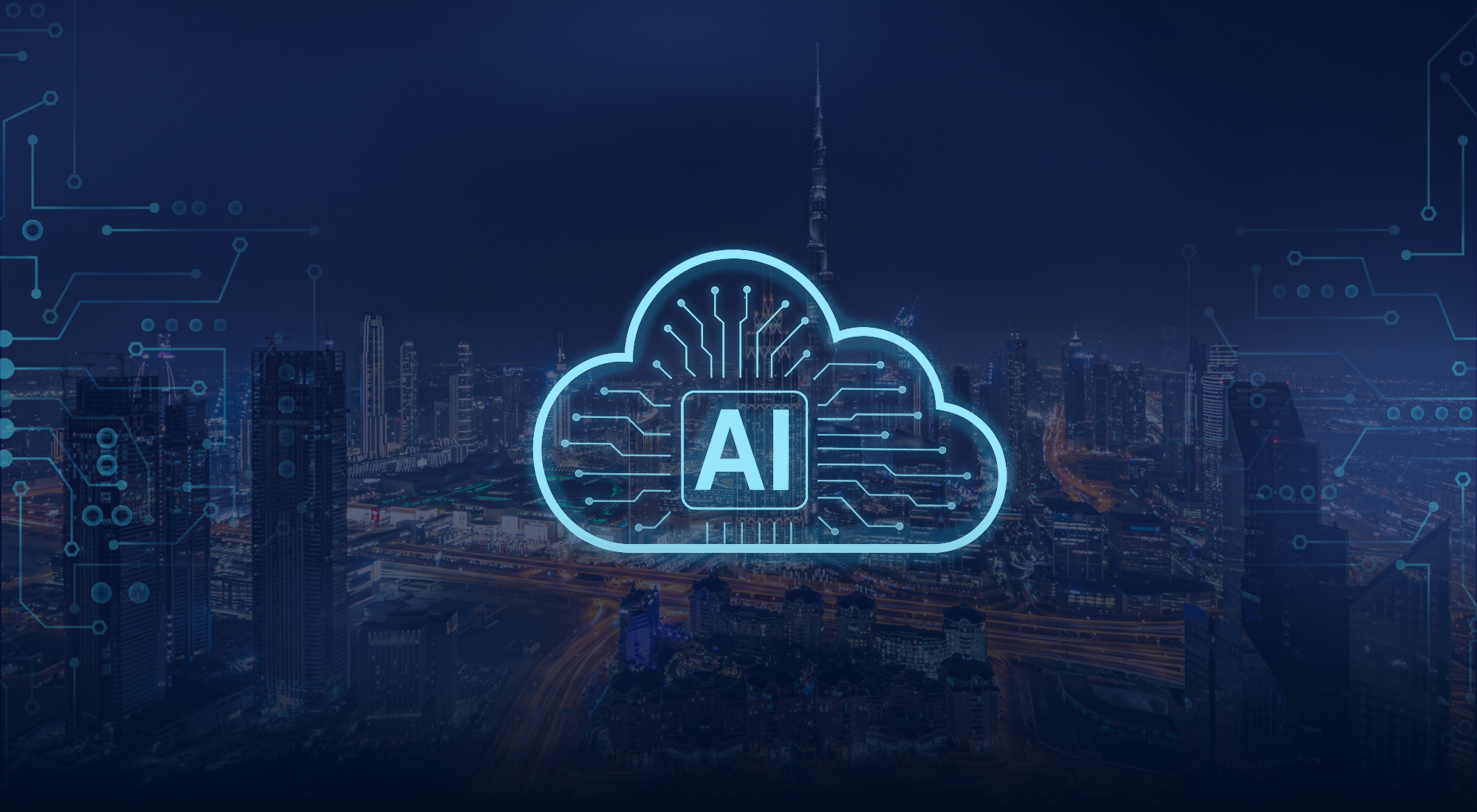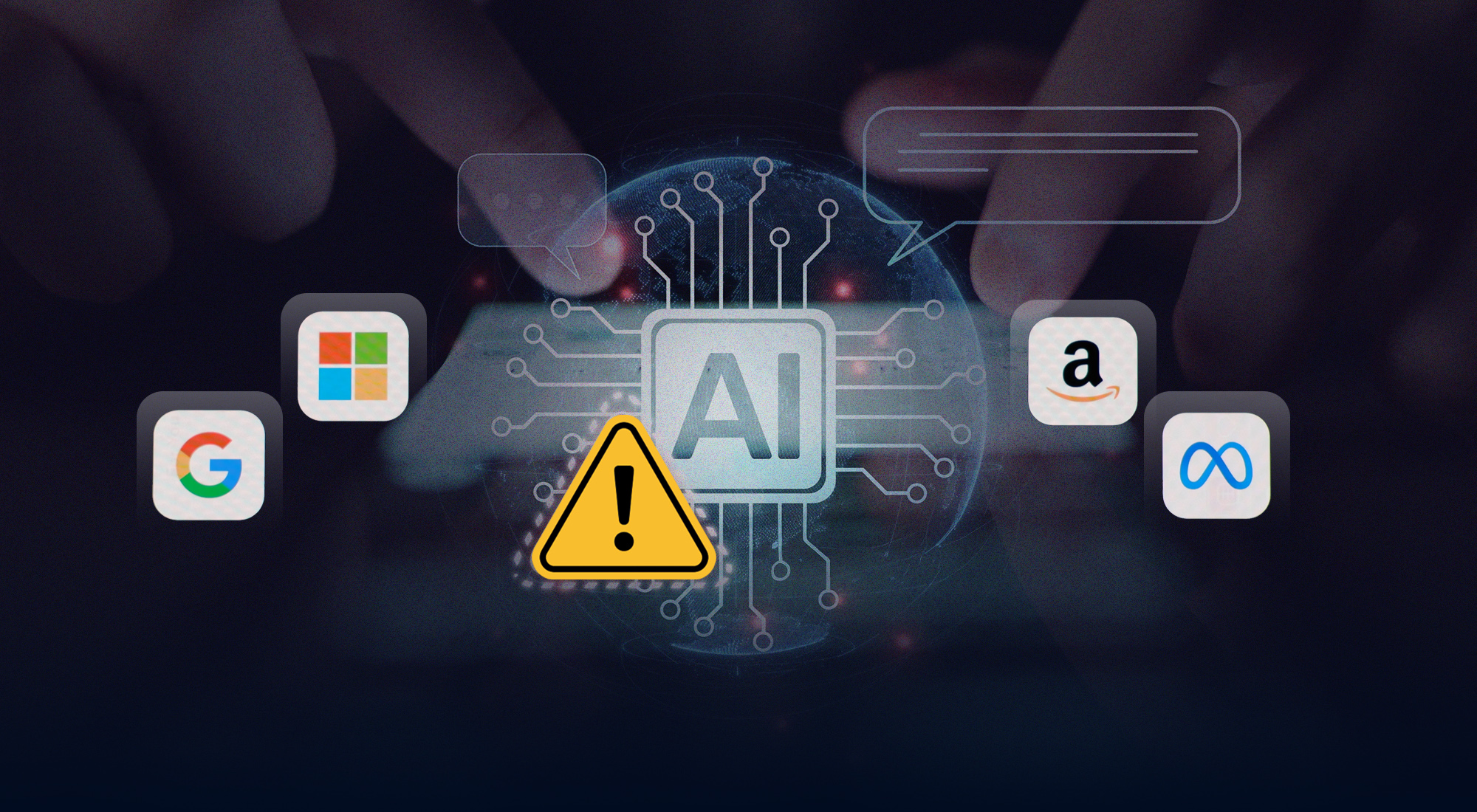The world has entered a new era with the rise of artificial intelligence (AI). The rapid changes in new technologies are also shaping the global outlook, including increased competition among regional blocs and global powers. During her speech at the World Economic Forum 2025, European Commission President Ursula von der Leyen warned that the world entered “a new era of harsh geo-strategic competition.”[1]
At the same time, the global landscape continues to be affected by violent conflicts and instability, making the need for effective conflict prevention and resolution more urgent than ever. The rise of AI and machine learning (ML) can contribute to global peace and security, for example, by predicting and preventing conflicts more effectively. By analyzing massive amounts of complex data, these technologies can identify patterns and generate insights that inform policy decisions, helping the international community to manage crises before they fully escalate.
In fact, the role of AI and ML in conflict prediction and prevention is growing and has become more and more effective in the field of peace and security.[2] For example, using data capture technologies to identify and analyze recurrent conflict patterns and forecast potential crises has become increasingly central to how the United Nations (UN) is dealing with insecurity and instability.[3][4]
Historical Context and Current Trends
Traditionally, conflict analysis relied mostly on qualitative methods, historical case studies, and expert opinions. While the usage of vast amounts of data is not new, such efforts have gained significant momentum in recent years with advancements in technology, especially in the area of AI, computational power and data availability.[5] The application of AI and ML in this context is based on the idea that conflicts are not random occurrences but are influenced by a variety of socio-economic, political, and environmental factors.[6] The rise of quantitative approaches, particularly with the advent of ML and AI, has offered new possibilities for identifying patterns and predicting future conflicts.[7]
Current trends in the application of AI and ML to conflict prediction are characterized by several key developments. One of the most important aspects that is shaping the current trend is data availability.[8] The abundance of data from various sources, including conflict databases like the Armed Conflict Location and Event Data Project (ACLED),[9] the Uppsala Conflict Data Program (UCDP),[10] and the Global Conflict Tracker,[11] as well as other sources such as social media, news outlets[12], and satellite imagery, has allowed researchers to create sophisticated predictive models. There are also various conditioning factors that influence conflict, including socio-economic conditions, such as poverty, income inequality, economic struggle, and weak governance, political/governance factors, natural resource exploitation, ethnic fractionalization, vulnerability to natural disasters, and climate change. Careful selection of the conditioning factors is essential for the accuracy of predictive models, which are used in ML algorithms to process large datasets, identify patterns, and forecast conflict risks.[13]
There are also early warning systems (EWS) that aim to alert people to the risk of violent conflict sufficiently in advance to trigger action and reduce its impact. These systems collect and analyze data to map out conflict trends and dynamics, which allows for preventative intervention by stakeholders when warning signs of violence emerge.[14] AI has been instrumental in the development of sophisticated EWS.[15] Good examples of EWS are the Violence Early Warning System (ViEWS) project,[16] which provides predictions for where armed conflicts are likely to occur, and the Early Warning Project (EWP),[17] which assesses the likelihood of mass atrocities.[18] For instance, the EWP model successfully identified Ethiopia in 2015 and Myanmar in 2016 as high-risk countries prior to the onset of mass killings and ViEWS forecasted elevated risks in the Democratic Republic of Congo, corresponding with actual conflict events during those years.[19]
Geographic information is also increasingly being incorporated into conflict prediction models. The use of satellite imagery and geographic information systems (GIS) data enables researchers to analyze the spatial dynamics of conflict and identify high-risk areas.[20] By combining satellite data with deep learning, experts can predict where riots are likely to break out. One of the key tools in conflict forecasting is the Situational Awareness Geospatial Enterprise (SAGE) database, which serves as the central event and incident tracking system for UN peacekeeping missions. This powerful resource helps identify potential flashpoints, allowing for more proactive peacekeeping efforts.[21]
Real-time data collection and analysis is another growing trend. This involves gathering data from various sources, such as social media, news, and on-the-ground reports, and using AI algorithms to identify emerging conflict risks.[22] This approach enables rapid responses to developing situations, and the models can also be updated in real time to incorporate early warning signs of conflict.[23]
Challenges
Despite the progress in the field, several challenges and limitations need to be addressed. First, the accuracy of ML models depends heavily on the quality and availability of data.[24] Since vast amounts of data are used in complex algorithms to analyze patterns and predict the likelihood of the conflict escalating, data accuracy and transparency play a key role in terms of the accuracy of the predictions. Many data sources, however, are unstructured, inconsistent, or incomplete and require significant preprocessing. To realize the full potential of AI and ML in conflict prediction and prevention, firstly, efforts should be made to improve the quality and availability of conflict-related data. This includes developing standardized data collection methods and ensuring that data is accessible and shareable. Furthermore, data can be biased, which can lead to skewed predictions and perpetuate inequalities. There is also the risk of data being deliberately falsified.[25]
Second, many ML models function as “black boxes,” meaning that it is often unclear how they arrive at their predictions. This lack of transparency can hinder trust in the models and limit their practical use in policy decision-making.[26] Improving model interpretability is a major challenge that requires more research. Another key issue is that predictive models are usually trained on specific datasets, which means they may not work well in different regions or contexts. To be truly effective, these models need to be adapted to local dynamics and tailored to the unique factors of each situation.[27]
Third, predicting armed conflict remains a difficult task, largely due to limited data and the political sensitivities surrounding such analyses. While datasets like the Uppsala Conflict Data Program (UCDP) and Armed Conflict Location and Event Data (ACLED) have greatly improved access to conflict-related information, human-collected data can unintentionally miss key details and undergo changes in how it is recorded over time. Predicting armed conflict is naturally complex, and inaccuracies in the data can become more pronounced when used for forecasting.[28]
Beyond technical challenges, the use of AI in conflict prediction also raises ethical concerns. These include the risk of surveillance and privacy violations, potential biases in algorithms, and the danger of automation bias. There is also the risk of automation bias where decision-makers rely too heavily on AI-generated predictions without questioning their accuracy.[29] Ethical considerations should be central to the development and deployment of AI systems for conflict prediction and prevention. This includes ensuring that AI systems respect human rights, privacy, and democratic values. The development of effective AI solutions for conflict prevention requires interdisciplinary collaboration between computer scientists, social scientists, and policy experts. International cooperation through multilateral organizations is necessary to coordinate efforts, establish standards, and promote the responsible use of AI for peace.
Lastly, the importance of the security of these systems plays a crucial role. AI systems can become targets of cyberattacks, and malicious actors might try to manipulate predictions or gain access to sensitive information, making it critical to safeguard these technologies against misuse.
Practical Implication and Impacts
Integrating AI and ML into conflict prevention holds enormous promise for sustaining global peace. By harnessing AI-powered systems, peace-building organizations can enhance their ability to detect early signs of tension and swiftly respond to emerging risks. These technologies sift through massive amounts of complex data to uncover subtle patterns, often revealing the seeds of potential crises long before they fully take root. With such early warnings, decision-makers, if they are not part of the conflict themselves, have a better chance to intervene in a timely manner, potentially defusing conflicts before they escalate into violence.[30]
AI can be used to improve the safety and efficiency of peacekeeping operations. Predictive models can be used to identify threats against peacekeepers and strengthen camp security. These same tools also facilitate smarter resource allocation and strategic planning, paving the way for more efficient troop deployments and more effective peacekeeping missions in the future.
AI’s role does not stop at prevention and protection. It is also a valuable asset in conflict resolution and mediation efforts. By breaking down complex datasets and providing clear analysis, AI enables digital dialogues that help negotiators find common ground.[31] This analytical support can minimize misunderstandings and assist in drafting agreements that address the nuanced realities of conflict, which is important to reach lasting solutions.
AI is now seen as a threat to democracy for its ability to spread disinformation. However, AI can also be used to combat disinformation. AI-powered fact-checking and content moderation tools can be used to detect and dismantle false information. The responsible use of AI in conflict prevention, however, requires more than just technological innovation. It calls for robust international cooperation and collaboration.[32] Multilateral institutions, such as the UN or the European Union, play a critical role in establishing standards and best practices that ensure these tools are used ethically. Also, governments and the private sector need to cooperate in addressing the potential risks and in maximizing the peacebuilding potential of AI.[33] Ultimately, the goal is to develop AI systems that are not only powerful but also transparent, accountable, and free from bias. Responsible AI governance must go beyond self-regulation, embracing international collaboration as the foundation for a safer, more secure, and peaceful world.
Conclusion
AI has the potential to be a double-edged sword as it can be weaponized for power struggles and military competition, but it can also be a force for peace. By leveraging large datasets, sophisticated algorithms, and advanced analytical techniques, it is possible to identify patterns of conflict and anticipate emerging crises. With AI-driven early warning systems and response mechanisms, security and conflict prevention efforts can become more effective.[34] AI is already playing a role in mediation and peacebuilding, from facilitating digital dialogues to helping draft agreements. It is even being used to monitor ceasefire violations, reducing harm to peacekeepers and civilians. Additionally, AI-powered tools can reframe divisive rhetoric into language that fosters understanding, helping to de-escalate tensions before they turn into conflict. AI can assist in drafting agreements and is being used to monitor ceasefire violations, reducing incidents and harm to peacekeepers.[35]
AI and ML hold great promise for improving conflict prediction and prevention efforts. However, it is also important to keep in mind the challenges and limitations of these technologies, including the need to address issues of data quality, model interpretability, ethical concerns, and the potential for misuse. Responsible AI governance and multilateral cooperation are essential for maximizing the benefits and mitigating the risks of AI for peace. With careful planning, ethical considerations, and international collaboration, the use of AI can make a significant contribution to global peace and security. The key lies in using these tools to augment and enhance human agency and decision-making, rather than replacing it.
[1] “Special Address by the President von der Leyen at the World Economic Forum,” European Commission, January 21, 2025, https://ec.europa.eu/commission/presscorner/detail/en/speech_25_285.
[2] Timur Obukhov and Maria A. Brovelli, “Identifying Conditioning Factors and Predictors of Conflict Likelihood for Machine Learning Models: A Literature Review,” ISPRS International Journal of Geo-Information 12, no. 8 (2023): p. 322, doi: 10.3390/ijgi12080322.
[3] Nick Zuroski, Megan Corrado, and Liz Hume, “Designing AI for Conflict Prevention & Peacebuilding,” Alliance for Peacebuilding, October 2023.
[4] Eduardo Albrecht, “Predictive Technologies in Conflict Prevention: Practical and Policy Considerations for the Multilateral System,” UNU-CPR Discussion Paper (New York: United Nations University, 2023).
[5] Obukhov and Brovelli, “Identifying Conditioning Factors and Predictors of Conflict Likelihood for Machine Learning Models.”
[6] Max Murphy, Ezra Sharpe, and Kayla Huang, “The promise of machine learning in violent conflict forecasting,” Data & Policy 6 (2024): p. e35, doi: 10.1017/dap.2024.27.
[7] Obukhov and Brovelli, “Identifying Conditioning Factors and Predictors of Conflict Likelihood for Machine Learning Models.”
[8] Olabanji B. Olaide and Adebola K. Ojo, “A Model for Conflicts’ Prediction using Deep Neural Network,” IJCA 183, no. 29 (October 2021): pp. 8–12, doi: 10.5120/ijca2021921667.
[9] Armed Conflict Location & Event Data Project, ACLED, https://acleddata.com/.
[10] Uppsala Conflict Data Program (UCDP), “UCDP Encyclopedia,” Department of Peace and Conflict Research, Uppsala University, https://ucdp.uu.se/encyclopedia.
[11] Council on Foreign Relations, “Global Conflict Tracker,” https://www.cfr.org/global-conflict-tracker
[12] Michelle Giovanardi, “AI for peace: mitigating the risks and enhancing opportunities,” Data & Policy 6 (2024): p. e41, doi: 10.1017/dap.2024.37.
[13] Obukhov and Brovelli, “Identifying Conditioning Factors and Predictors of Conflict Likelihood for Machine Learning Models.”
[14] Zuroski, Corrado, and Hume, “Designing AI for Conflict Prevention & Peacebuilding.”
[15] Giovanardi “AI for Peace: Mitigating the Risks and Enhancing Opportunities.”
[16] ViEWS, “A Political Violence Early-Warning System,” Uppsala University, https://viewsforecasting.org/
[17] Early Warning Project, “Assessing the Risk of Mass Atrocities,” United States Holocaust Memorial Museum, https://earlywarningproject.ushmm.org/.
[18] Håvard Hegre, Curtis Bell, Paola Vesco et al., “ViEWS2020 : Revising and evaluating the ViEWS political Violence Early-Warning System,” Journal of Peace Research 58, no. 3 (2021): pp. 599–611, doi: 10.1177/0022343320962157.
[19] Early Warning Project, “Accuracy of Our Forecasting Model,” United States Holocaust Memorial Museum, Washington, DC, USA, https://earlywarningproject.ushmm.org/accuracy.
[20] Scott Warnke and Daniel Runfola, “From Prediction to Explanation: Using Explainable AI to Understand Satellite-Based Riot Forecasting Models,” Remote Sensing 17, no. 2 (2025): p. 313, doi: 10.3390/rs17020313.
[21] Murphy, Sharpe, and Huang, “The promise of machine learning in violent conflict forecasting.”
[22] Giovanardi, “AI for Peace: Mitigating the Risks and Enhancing Opportunities.”
[23] Mark Musumba, Naureen Fatema, and Shahriar Kibriya, “Prevention Is Better Than Cure: Machine Learning Approach to Conflict Prediction in Sub-Saharan Africa,” Sustainability 13, no. 13 (2021): p. 7366, doi: 10.3390/su13137366.
[24] Obukhov and Brovelli, “Identifying Conditioning Factors and Predictors of Conflict Likelihood for Machine Learning Models.”
[25] Murphy, Sharpe, and Huang, “The promise of machine learning in violent conflict forecasting.”
[26] Ibid.
[27] Obukhov and Brovelli, “Identifying Conditioning Factors and Predictors of Conflict Likelihood for Machine Learning Models.”
[28] Margherita Philipp and Hannes Mueller, “Harnessing AI for humanitarian action: Moving from response to prevention,” Centre for Economic Policy Research (CEPR), December 13, 2024, https://cepr.org/voxeu/columns/harnessing-ai-humanitarian-action-moving-response-prevention.
[29] Albrecht, “Predictive Technologies in Conflict Prevention: Practical and Policy Considerations for the Multilateral System.”
[30] Zuroski, Corrado, and Hume, “Designing AI for Conflict Prevention & Peacebuilding.”
[31] Murphy, Sharpe, and Huang, “The promise of machine learning in violent conflict forecasting.”
[32] Giovanardi, “AI for Peace: Mitigating the Risks and Enhancing Opportunities.”
[33] Zuroski, Corrado, and Hume, “Designing AI for Conflict Prevention & Peacebuilding.”
[34] Giovanardi, “AI for Peace: Mitigating the Risks and Enhancing Opportunities.”
[35] Zuroski, Corrado, and Hume, “Designing AI for Conflict Prevention & Peacebuilding.”



